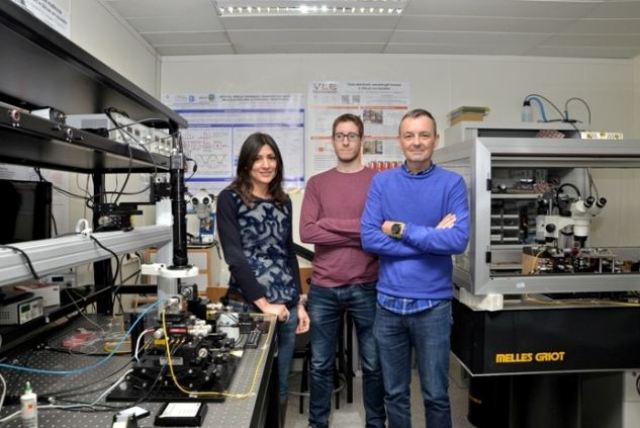Jan 28 2016
Researchers at the Polytechnic Univeristy of Valencia are at the forefront of a revolution in microwave photonics, bringing us the first all-purpose programmable optical chips.

Optical chips or processors are used in everything from biomedical devices to telecommunications networks. As it stands, each chip has to be custom designed and manufactured for each new task, which keeps productions costs high and the sector fragmented. What researchers at the Universitat Politècnica de València (UPV) have done is to design a generic optical chip that can be programmed on demand to carry out any number of functions (currently at laboratory scale only).
In fact, they first proposed the concept of an all-purpose optical processor three years ago, putting them at the forefront of the state-of-the-art in the field of microwave photonics. Today, the team led by Prof. José Capmany at the UPV’s Institute of Telecommunications and Multimedia Applications (iTEAM) are in the process of defining a starter chip that can be programmed to offer two functions: filter and instant frequency measurement. Manufactured from indium phosphide, they expect to be designing chips that incorporate between five and six functionalities by the end of the year.
Capmany underlines the importance of this achievement: “This the first step towards a complete overhaul of the telecommunications sector. The programmable optical chip, once available on the market, will trigger an exponential drop in chip manufacturing costs. In the not-too-distant future, we will have generic optical processors with a standard configuration and universal core which will be programmable on demand. Manufacturing processes will be unified -whatever they are used for, the chip will be manufactured in the same way- which will lead to massive savings across the board”.
Besides the economic advantages, the programmable chip will also usher in efficiency gains and all-important versatility: “Let’s imagine, for instance, that I want to manufacture three types of circuits: one that takes a delay line, another to generate signals and a third to filter. Until now we needed to manufacture three different types of chips. Now we can use the same hardware platform for all three functions”.
The group has recently published a paper in Nature Photonics (subscribers only), also featuring in the Editorial section, available to non-subscribers and well worth a read. Also collaborating in this line of research at iTEAM are Pascual Muñoz, Ivana Gasulla, Javier Sanchez-Fandiño and Daniel Pérez.